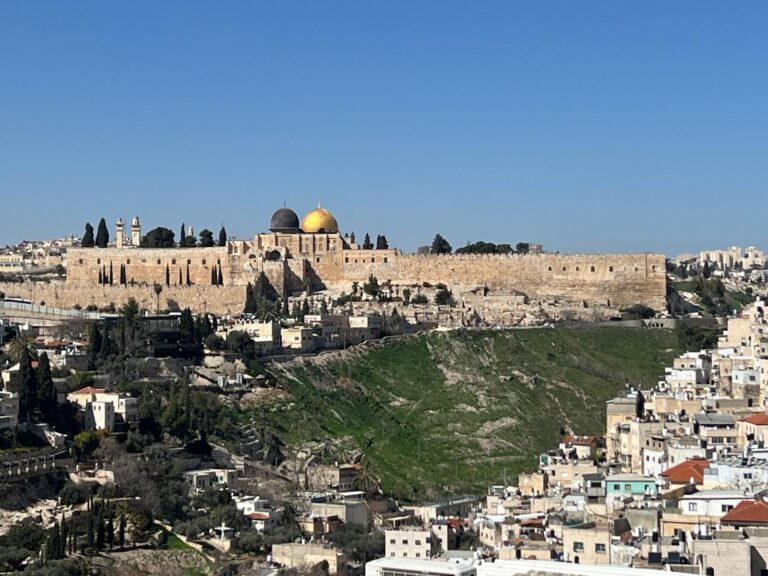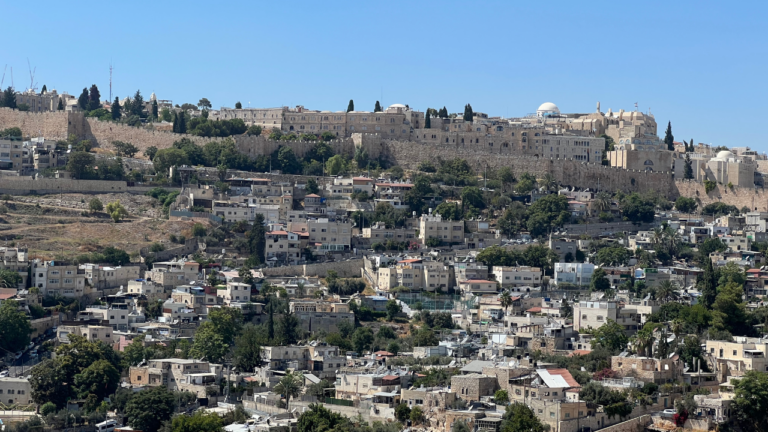Hunting the Fox in Our Midst
The tractate of Makkot famously ends with the story of four tannaitic sages ascending to see Jerusalem. Rabban Gamliel, Rebbe Elazar ben Azaryah, Rebbe Yehoshua, and Rebbe Akiva lived immediately after the destruction of the second temple. They would periodically return to Jerusalem, presumably to yearnfully pray for the city’s restoration. When they reached the Har HaBayit, they witnessed a fox emerging from the Kodesh haKodashim, the former home of the Aron HaKodesh and holiest sanctum of the world. The sages began to cry, while Rebbe Akiva laughed. The Gemara goes on to describe Rebbe Akiva’s powerful optimism; even when staring at the greatest expression of utter destruction, he sees the latent prophecies of hope that emerge from the darkness. He comforts the other sages, including his own teacher Rebbe Yehoshua, and the tractate ends with the immortal words of עקיבא ניחמנתו עקיבא ניחמתנו, Akiva you have comforted us.
Rav Yaakov Etlinger, the brilliant Torah leader of German Jewry in the 1800s and rebbe of Rav Shamshon Rephael Hirsch, points out a fascinating distinction between this gemara and another parallel story recorded in Yoma (69b). Upon completing the construction of the second temple, the sages of the Anshei Keneset HaGedolah decided that they would attempt to neutralize the evil inclination for idol worship. This yetzer hara was responsible for so much destruction, and yet “it still dances among us!” Given that the previous generations were unsuccessful at evading this grievous sin and the temple was destroyed as a result, they beseeched Hashem to allow them to contain it. Sure enough, the evil inclination for avodah zarah emerged from the Holy of Holies in the form of a fiery lion. This allowed them to capture it and “seal it” in a lead jar.
Both of these aggadic passages are layered with meaning. But Rav Etlinger notes a simple distinction. While a lion emerged from the Holy of Holies after the first temple’s destruction, a fox emerged after the second temple’s destruction. The first Beit HaMikdash was destroyed because of the overpowering obsession with seeing higher spiritual forces animating the physical universe. (We will be’ezrat Hashem revisit this aspect of the Gemara in the near future.) This yetzer was represented as a fiery lion; powerful, fearsome, and dominating. While the destruction of the first temple was tragic, recognizing how powerful our foe was serves as a small consolation.
But the second temple was destroyed because of something far less domineering and imposing. Our sinat chinam, useless and baseless hatred, led to the downfall of Jerusalem. This yetzer for internal hatred is represented by the fox. Instead of fighting us head on, the evil inclination cleverly snuck between us, slowly spreading his toxic influence to turn Bnei Yisrael against each other. Even the holiest of Jews, intensely loyal to the Torah and the Jewish people, began to view their own brothers as the enemy. Ironically, their principal motivation was to defend Klal Yisrael both physically and spiritually. But their pure goals, accompanied by a few devious tricks of the yetzer hara, became a powerful destructive force that devastated the Jewish people and the holy city that exists to unify them.
The holy sages cried bitterly at this pathetic sight. How could we have been so easily tricked into becoming our own worst enemies? How could such a weak creature have so effectively defeated us? Perhaps it is not a coincidence that Rebbe Akiva, the ultimate preacher of the value of loving one’s fellow Jew, is able to restore their hope for a future in which Klal Yisrael will unite in the streets of the restored Jerusalem.
We recite in the Kingship section of mussaf on Rosh HaShanah:וַיְהִ֥י בִישֻׁר֖וּן מֶ֑לֶךְ בְּהִתְאַסֵּף֙ רָ֣אשֵׁי עָ֔ם יַ֖חַד שִׁבְטֵ֥י יִשְׂרָאֵֽל. It is only when Klal Yisrael unites that we can crown HaKadosh Baruch Hu as our King. But in order to do so, we must find and destroy the wily fox in our midst who continuously tricks us into destroying each other. Hunting foxes is not easy, but the Am HaNetzach has outsmarted more impressive foes in its illustrious past. As I was walking down the street this past motzei Shabbat, I was greeted by the sound of many Jews, of all stripes and colors, singing ליהודים היתה אורה ושמחה in praise of Hashem over the downfall of our enemies. Heads were sticking out of windows, people were standing on mirpasot, and Jews were connecting with each other across physical and theological divides in such a beautiful way. These feelings of achdut have been elusive over the past eight months; may Hashem grant us a beautiful year in which the various Shivtei Yisrael stand before Him, יחד.


